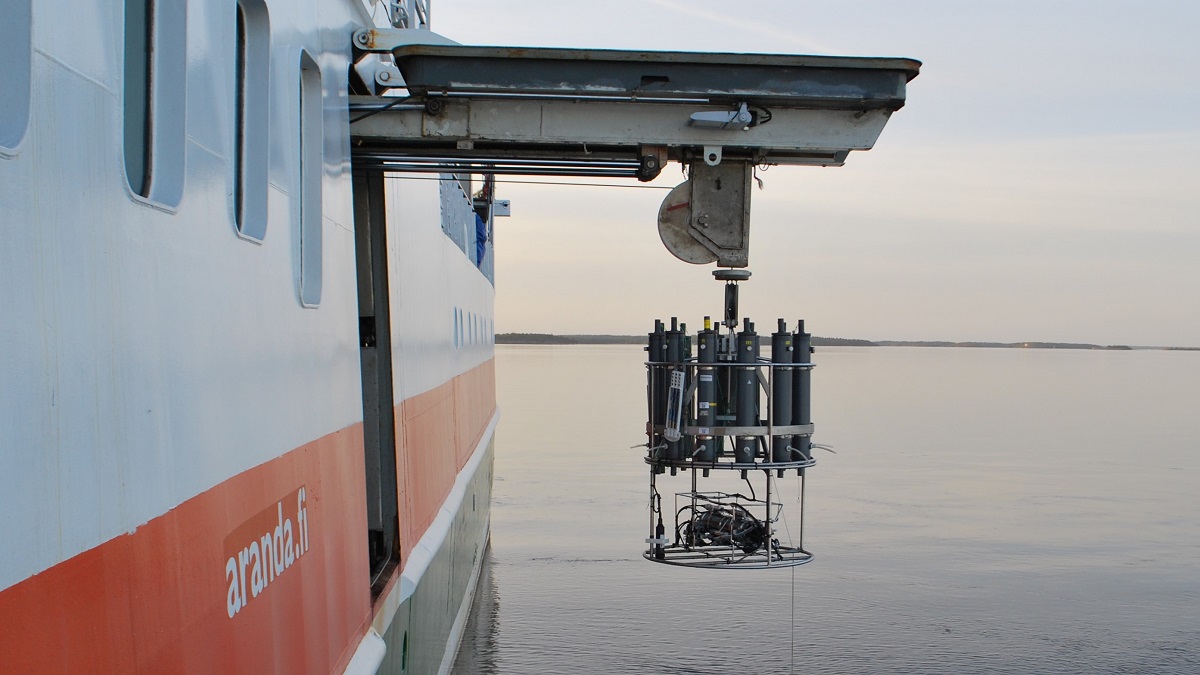CTD measures temperature and salinity
CTD is one of the most important measurement instruments in oceanography. It is used to measure water temperature and salinity from the surface to the bottom. The abbreviation CTD comes from the words conductivity, temperature and depth. This is a bit misleading, since while the CTD-probe measures electric conductivity and temperature, instead of depth it measures pressure. Salinity and depth can be calculated from these measured quantities. In addition, the density of seawater and the speed of sound in the water mass can also be determined.
CTD-probes come in different sizes. A small CTD-probe is descended to the sea by hand. Operating these small probes can be done by a single person. On the other hand, the largest CTD-probes on are descended with a winch. For example, the large CTD-probe used in the research vessel Aranda is with its frame 1,4 meters high and weights around 180 kilograms. It is lowered to the sea with a hydraulic wire cable winch, with a cable that transports data. Also, automatic or remote controlled devices, like Argo buoys and gliders, often have a small CTD-device too.
The sensors in the CTD react quickly to the changes in the water, because the properties of a sea can change a notable amount even during a short depth range. Measurement accuracy and density of the data points depended on the device. For example, the CTD used in Aranda makes several precise measurements in a second (around every 2 centimeters).
It’s possible to attach several additional sensors to a CTD. They measure for example oxygenation, the amount of algae and the amount of light in the sea. Water samplers can also be attached. The research vessel Aranda’s CTD has 12 water samplers that can be launched in different depths, thus collecting water samples from different kinds of layers of the sea.
The data is used in monitoring the state of the sea. It depicts the seasonal changes in the sea, the stratification of the seawater and the movements of water. Additional sensors collect data for example about the oxygen depletion and eutrophication. The measurement data is also the support and background data for the other oceanographic research. From the water samples it is possible to survey if there is hydrogen sulfide in the places with oxygen depletion, determine nutrient concentrations and study what species there are in the sea.
The Finnish Meteorological Institute is responsible for the CTD-equipment in the research vessel Aranda and for monitoring the physical state of the Baltic Sea from the ship. In addition, FMI’s CTD-probes are used for example in the ships of the Finnish Border Guard and in s called fixed stations, that are observation points spread along the Finnish coast. FMI’s autonomic measurement devices also do CTD-soundings.


6.9.2022
